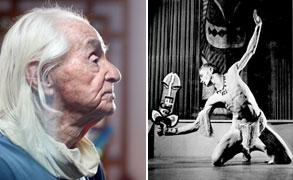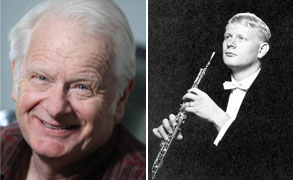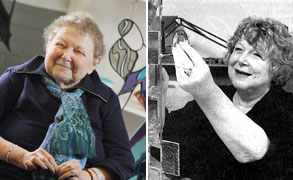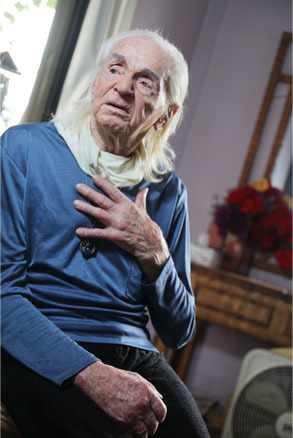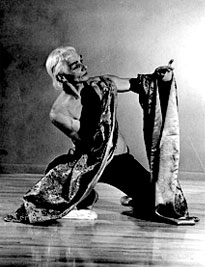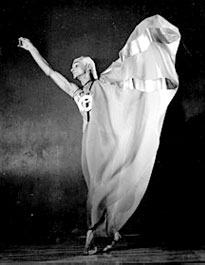As he grew older, he bristled against the repressed social climate of the rural South. “At 19, wrote a note on a summer night and stuck it on the front door, and on that note I said, ‘When I get where I’m going, I will let you know,’ and that was all I said,” he explains. He left with a bus ticket and $50 in his pocket. He studied art in Raleigh, N.C., and opened a studio where he taught and specialized in portraiture. A few years later he discovered that dance classes were being taught at the University of North Carolina at Chapel Hill. “Here was my opportunity,” he says. “I leaped at that opportunity, and I’ve been there ever since.”
After military serving in World War II, Lynn found his way to Salt Lake City, Utah. In the ensuing years, his dance career blossomed: He was a member of various dance troupes and theaters and toured the U.S. and Europe as a soloist. He taught dance – sometimes in his apartment, sometimes in his own theater, and sometimes at the college level – and served on the production staff for the dance department at the University of Utah.
He led three dance companies and four dance theaters – one housed in a vacant grocery store – and even relocated his troupe to a tent for a few seasons.
In 1978, after retiring from the university, Lynn decided to relocate his dance company. He broached the idea of moving to Ladysmith, where Doran, a young troupe member, had property. The idea didn’t sit well with the other dancers, but Lynn and Doran moved anyway, setting up shop at an abandoned farmstead. They bought and relocated a one-room school, which they converted into a dance studio and christened ChaliceStream. They still give recitals there, and Doran teaches in Ladysmith and Eau Claire.
ChaliceStream has become a showplace for Lynn’s descriptive style. “I’ve developed a dance form that is a form of storytelling,” he says. “I call myself a storyteller, because what I’m interested in is the story about people. In my work I use anything I need to make the story clearer and more interesting. If I need dance, I use dance. If I need music, I use music.”
The intimacy of ChaliceStream, he says, makes it an ideal place to dance: “You’re so close to people. You can see every flick of an eyebrow from people who are sitting there,” he says. “You have such a feeling of having reached a person. Because the thing I’ve tried to do, everything I dance about, always is the same thing: I dance about what does it meant to be a human being.” He wants his performances to carry messages through stories, rather than to come across as sermons, he says.
But what is he were asked to preach? He’s quick with advice: “If I could put it in electric lights and put it over the town: ‘Be your own master. Don’t let anyone else run your life.’ ”
That’s a lesson Lynn continues to embody in his second century.
